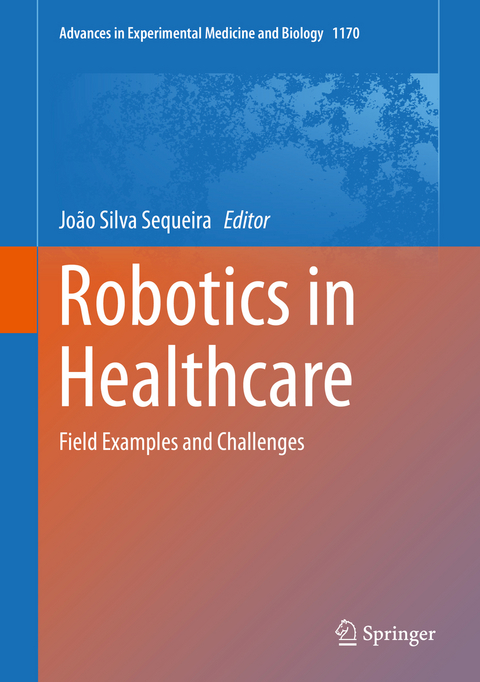
Robotics in Healthcare
Springer International Publishing (Verlag)
978-3-030-24229-9 (ISBN)
The work is a collection of contributions resulting from R&D efforts originated from scientific projects involving academia, technological partners, and end-user institutions. The aim is to provide a comprehensive overview of robotics technology applied to Healthcare, and discuss the anticipation of upcoming challenges.
The intersection of Robotics and Medicine includes socially and economically relevant areas, such as rehabilitation, therapy, and healthcare. Innovative usages of current robotics technologies are being somewhat stranded by concerns related to social dynamics. The examples covered in this volume show some of the potential societal benefits robotics can bring and how the robots are being integrated in social environments.
Despite the aforementioned concerns, a fantastic range of possibilities is being opened. The current trend in social robotics adds to technology challenges and requires R&D to think about Robotics as an horizontal discipline, intersectingsocial and exact sciences. For example, robots that can act as if they have credible personalities (not necessarily similar to humans) living in social scenarios, eventually helping people. Also, robots can move inside the human body to retrieve information that otherwise is difficult to obtain. The decision autonomy of these robots raises a broad range of subjects though the immediate advantages of its use are evident.
The book presents examples of robotics technologies tested in healthcare environments or realistically close to being deployed in the field and discusses the challenges involved. Chapter 1 provides a comprehensive overview of Healthcare robotics and points to realistically expectable developments in the near future. Chapter 2 describes the challenges deploying a social robot in the Pediatrics ward of an Oncological hospital for simple edutainment activities. Chapter 3 focuses on Human-Robot Interaction techniques and their role in social robotics. Chapter 4 focuson R&D efforts behind an endoscopic capsule robot. Chapter 5 addresses experiments in rehabilitation with orthotics and walker robots. These examples have deep social and economic relations with the Healthcare field, and, at the same time, are representative of the R&D efforts the robotics community is developing.
João Silva Sequeira is an Assistant Professor at IST, Lisbon, Portugal and a Principal Investigator at ISR/IST, Lisbon, Portugal. He has coordinated several national and international projects related to Robotics and was recently responsible for directing the Monarch consortium where robots were tested in the medical setting.
Foreword.- Acknowledgements.- Can a Robot Bring Your Life Back? A Systematic Review for Robotics in Rehabilitation.- Smart and Assistive Walker - ASBGo . Rehabilitation robotics: a smart-walker to assist ataxic patients.- Mechanical sensing for lower limb soft exoskeletons: recent progress and challenges.- A Proposed Clinical Evaluation of a Simulation Environment for Magnetically-Driven Active Endoscopic Capsules.- Social Robots as a complementary therapy in chronic, progressive diseases.- Developing a Social Robot - A Case Study.- Index.
| Erscheinungsdatum | 21.02.2020 |
|---|---|
| Reihe/Serie | Advances in Experimental Medicine and Biology |
| Zusatzinfo | IX, 128 p. 95 illus., 55 illus. in color. |
| Verlagsort | Cham |
| Sprache | englisch |
| Maße | 178 x 254 mm |
| Gewicht | 610 g |
| Themenwelt | Informatik ► Theorie / Studium ► Künstliche Intelligenz / Robotik |
| Medizin / Pharmazie ► Physiotherapie / Ergotherapie ► Orthopädie | |
| Naturwissenschaften ► Biologie ► Genetik / Molekularbiologie | |
| Technik ► Umwelttechnik / Biotechnologie | |
| Schlagworte | edutainment robotics • Healthcare Robotics • Human-Robot Interaction • rehabilitation robotics • social robotics |
| ISBN-10 | 3-030-24229-3 / 3030242293 |
| ISBN-13 | 978-3-030-24229-9 / 9783030242299 |
| Zustand | Neuware |
| Haben Sie eine Frage zum Produkt? |
aus dem Bereich


